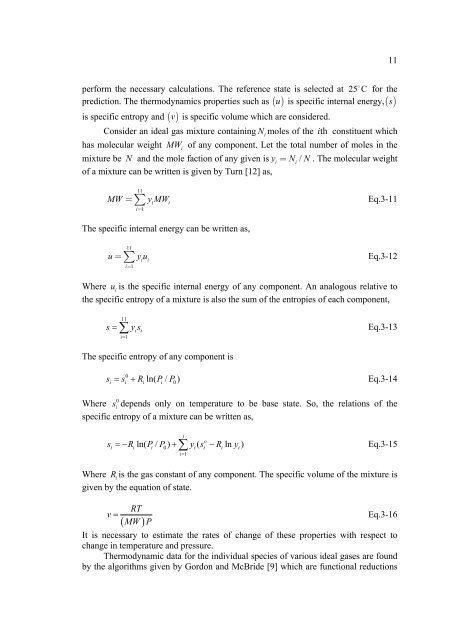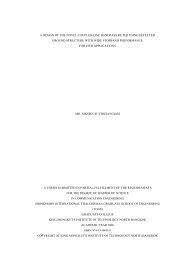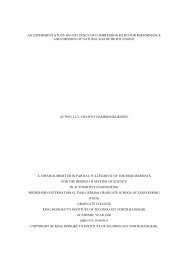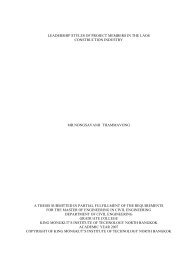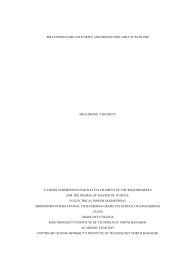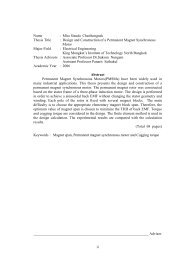analysis of water injection into high-temperature mixture of ...
analysis of water injection into high-temperature mixture of ...
analysis of water injection into high-temperature mixture of ...
Create successful ePaper yourself
Turn your PDF publications into a flip-book with our unique Google optimized e-Paper software.
11perform the necessary calculations. The reference state is selected at 25 C for theprediction. The thermodynamics properties such as ( u ) is specific internal energy,( s)v)is specific entropy and ( is specific volume which are considered.Consider an ideal gas <strong>mixture</strong> containing N moles <strong>of</strong> the ithconstituent whichhas molecular weightiiMW <strong>of</strong> any component. Let the total number <strong>of</strong> moles in the<strong>mixture</strong> be N and the mole faction <strong>of</strong> any given is yi= Ni/ N . The molecular weight<strong>of</strong> a <strong>mixture</strong> can be written is given by Turn [12] as,11MW = ∑ yMWi=1iiEq.3-11The specific internal energy can be written as, AAAAAAAAAAAAA11u= ∑ yiuii=1Eq.3-12Where u iis the specific internal energy <strong>of</strong> any component. An analogous relative tothe specific entropy <strong>of</strong> a <strong>mixture</strong> is also the sum <strong>of</strong> the entropies <strong>of</strong> each component,11s = ∑ ysEq.3-13i=1iiThe specific entropy <strong>of</strong> any component iss = s + R ln( P / P)Eq.3-140i i i i00Where s idepends only on <strong>temperature</strong> to be base state. So, the relations <strong>of</strong> thespecific entropy <strong>of</strong> a <strong>mixture</strong> can be written as,js R ln( P / P) y ( s R ln y )oi=−i i 0+ ∑ i i−i iEq.3-15i=1Where Riis the gas constant <strong>of</strong> any component. The specific volume <strong>of</strong> the <strong>mixture</strong> isgiven by the equation <strong>of</strong> state.RTv = Eq.3-16MW P( )It is necessary to estimate the rates <strong>of</strong> change <strong>of</strong> these properties with respect tochange in <strong>temperature</strong> and pressure.Thermodynamic data for the individual species <strong>of</strong> various ideal gases are foundby the algorithms given by Gordon and McBride [9] which are functional reductions


